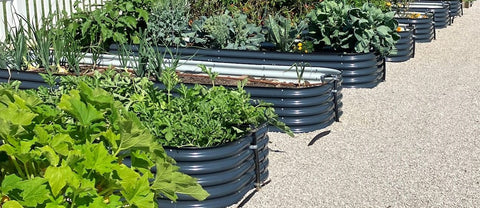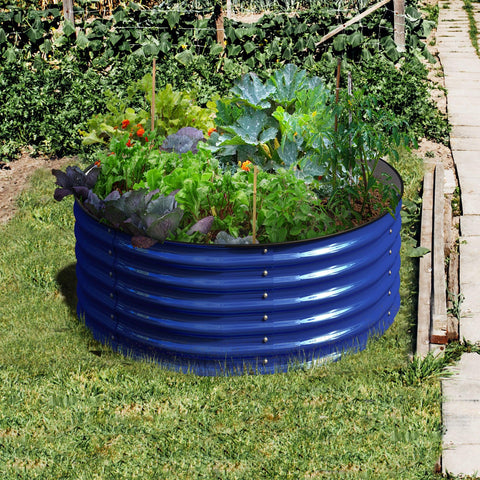Tips from Olle Garden Bed: How To Harvest Sweet Potatoes
Sweet potato is a delicious root vegetable with sweet taste and starch taste. These vegetables are easy to grow at home and harvest well in autumn. Once harvested, sweet potatoes can be stored for four to seven months if properly stored. Harvesting and storing sweet potatoes is easy, and taking the right steps can help you make the most of your harvest. The following content also has some reference value for raised garden beds.
What you will need:
Please make sure you have the right tools before you go to dig mud to pull some sweet potatoes.
Shovel or fork
Gloves (optional)
Container or trolley
Newspaper or waterproof cloth
Carton or paper bag.

Step 1 Check your factory
To determine whether your sweet potatoes are ready to harvest, you first need to check the leaves of the plant. When the leaves begin to turn yellow, the sweet potatoes should be ready to harvest. If you live in a cool climate, you should harvest sweet potatoes before the first frost. Frost damages the tops of plants and causes decay to spread down to the roots.
The growing season of sweet potatoes is very long, and it usually takes 90 to 120 days to grow. If planted in spring, they should be ready to harvest in early autumn.
Once the leaves begin to turn yellow, pick up a shovel or fork and prepare to harvest.
Step 2 Harvest
Sweet potatoes should be harvested when the soil is dry to reduce the risk of decay. Be sure to wear gloves (if you like), as harvesting root vegetables can be messy. Use a shovel or fork to gently dig into five to six inches of soil next to the bottom of the plant. Next, form a circle around the plant by gently digging. Remember to be careful when digging, because small scratches on sweet potatoes will lead to deterioration. If you happen to damage the skin of the sweet potato, please ensure that it is cooked within a day or two before it goes bad. If you don't damage your potatoes in the process, they can stay good for up to six months.
Start removing the soil and gently lift the plant with your hands. Make sure you sift the soil by hand to make sure you don't miss any potatoes. Once you put the sweet potato on the ground, be sure to shake off and brush off any excess dirt.
Do not wash potatoes, as this will increase moisture, leading to decay and disease. Instead, collect them in a container and set up your drying station.

Step 3. Pickled sweet potato
If the sweet potatoes are dried before storage, the shelf life will be longer. This process of drying potatoes is called pickling. Curing will help prevent decay and disease by forming a thin layer on the scratches. Your sweet potatoes should be pickled for one to two weeks, and then collected for storage.
If you have space, you can pickle your sweet potatoes outside in the sun or at home. Outdoor curing is applicable to sunny places where there is no rainfall forecast during curing. If you pickle sweet potatoes in the sun, you can spread waterproof cloth on the grass or table; Holding the sweet potato on the table when the sweet potato is solidified can reduce the risk of pests and small animals eating the fresh harvest.
If you pickle sweet potatoes indoors, you can put newspapers on the table and potatoes on it. Make sure to separate each potato evenly and place a fan in the room to improve air circulation. If any potatoes are bruised after pickling, please throw them into the compost, because they will soon go bad.
Step 4. Storage of sweet potatoes
If the sweet potatoes are stored in a dark and dry place with good ventilation, they will last the longest. Due to low temperature, basement and root cellar are ideal places for storing rhizome vegetables. If you do not have a root cellar or basement, you can store them in a dry container in the cabinet. If you store sweet potatoes in the kitchen, be sure to store them away from the stove, because heat will shorten the shelf life.
You can put the dried sweet potatoes side by side in a cardboard box or wrap them separately with newspapers. Wrapping each potato separately will help prevent moisture. In addition, if each is wrapped separately and one begins to deteriorate, the excess water will not be transferred to the other.
You can store potatoes in the refrigerator, but we do not recommend this because it may shorten the shelf life and reduce the flavor.

Sweet life!
Sweet potato is an excellent root vegetable, which will provide fresh agricultural products in autumn and winter. You can add this lovely vegetable to soup, stew or salad.
